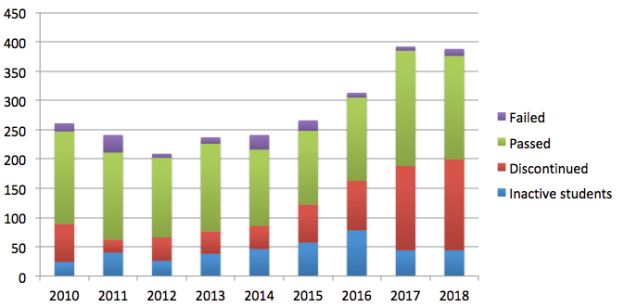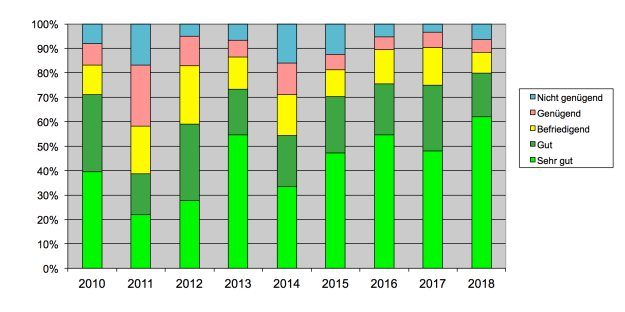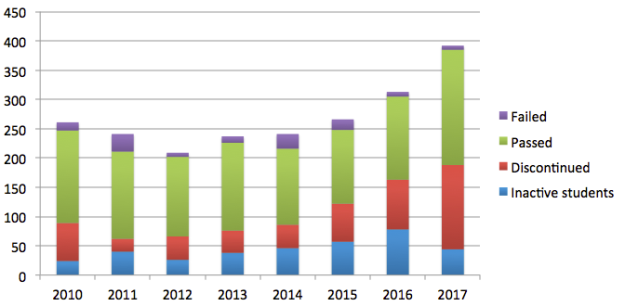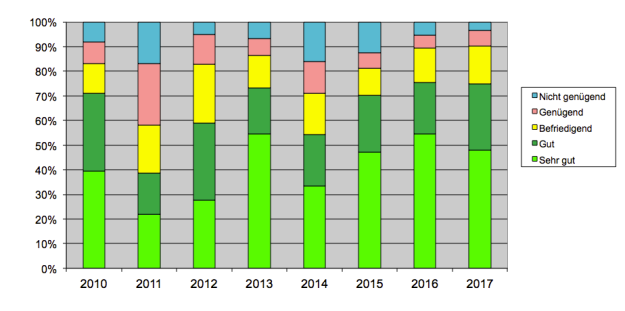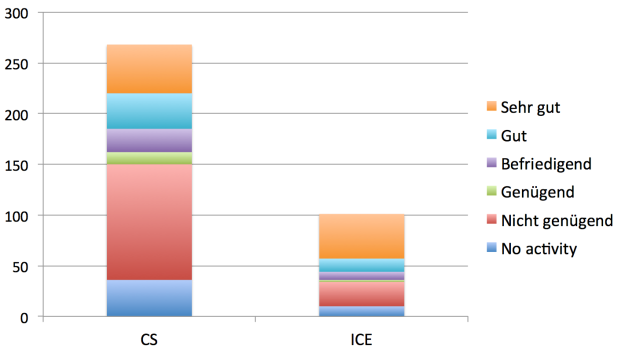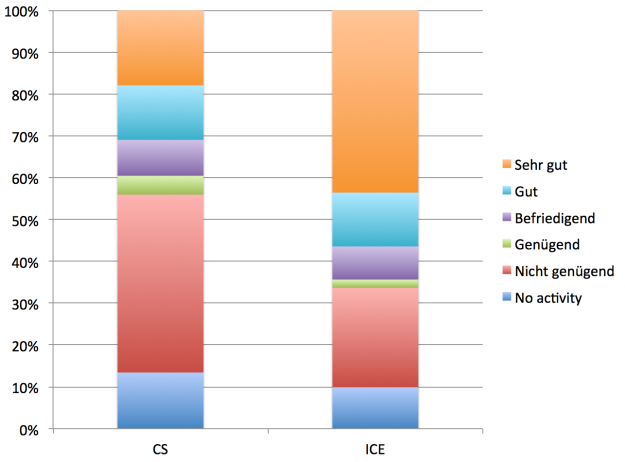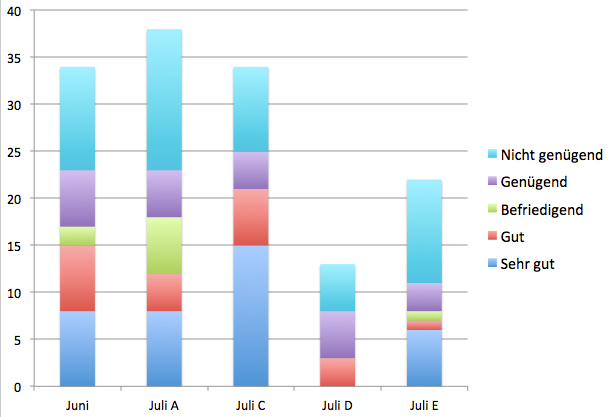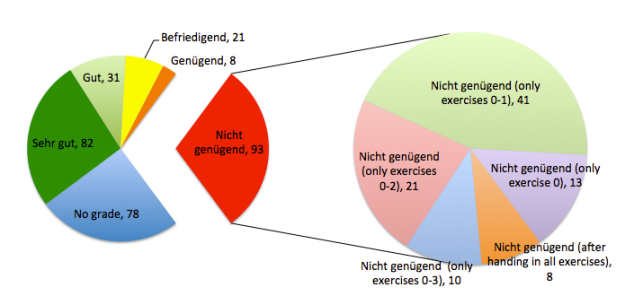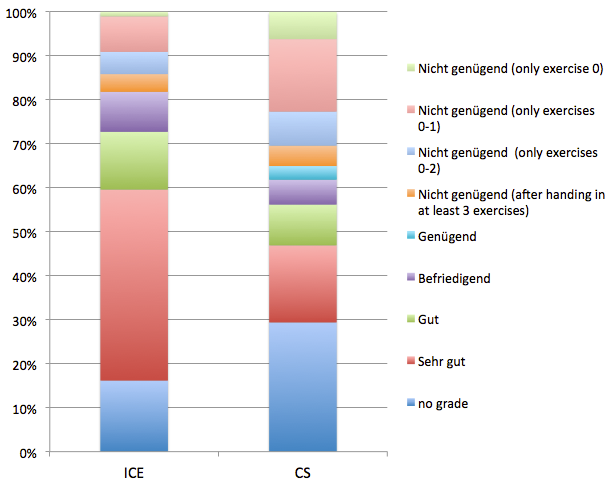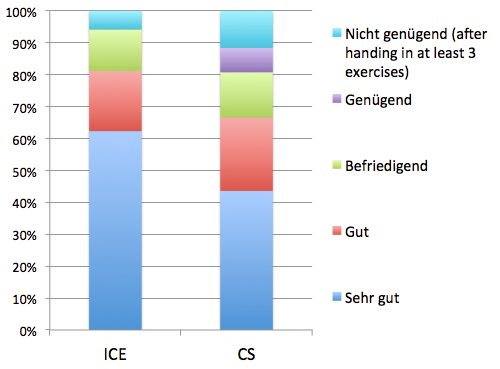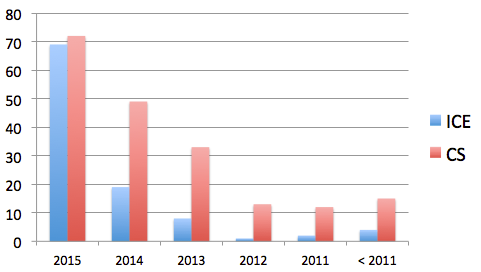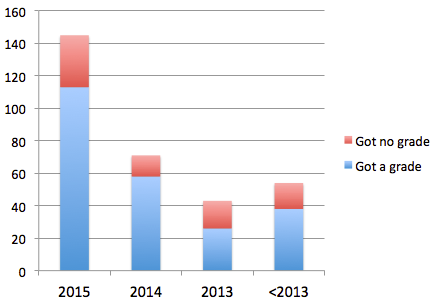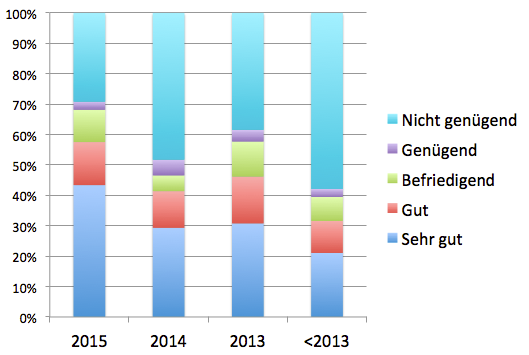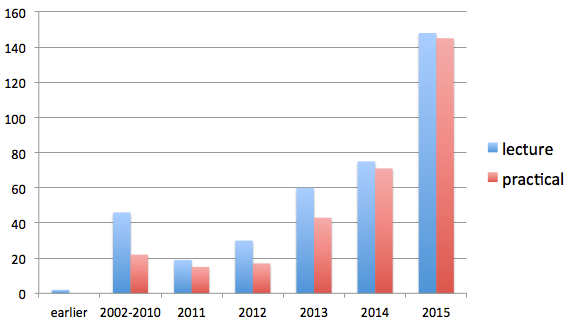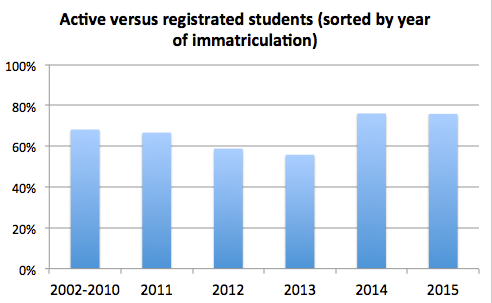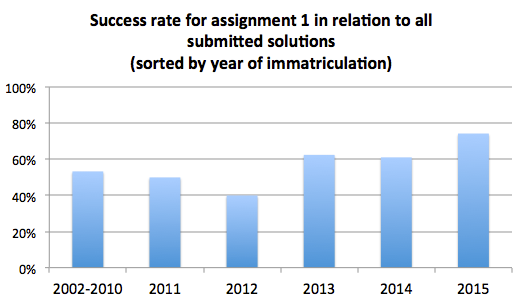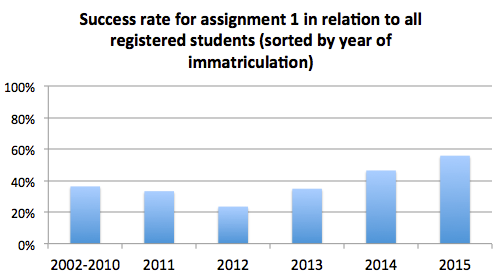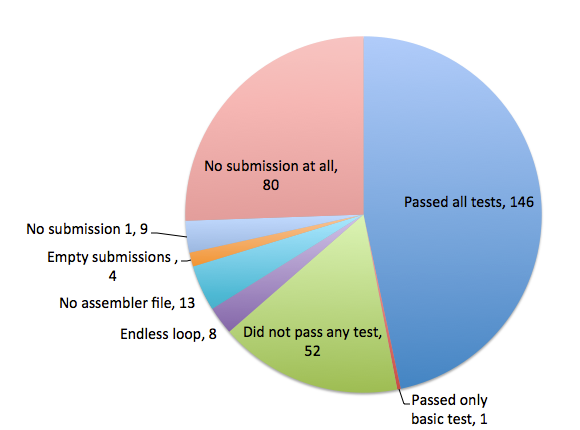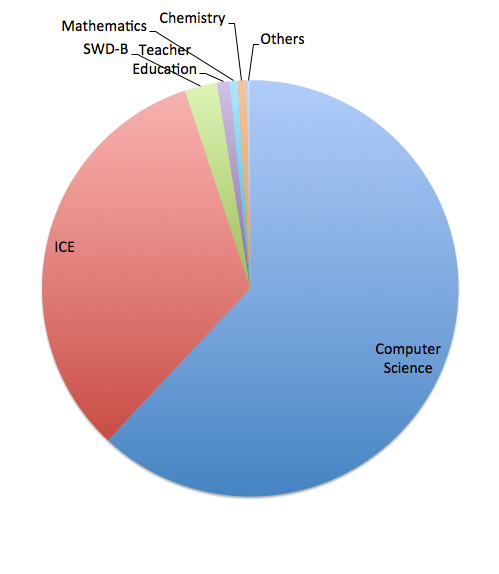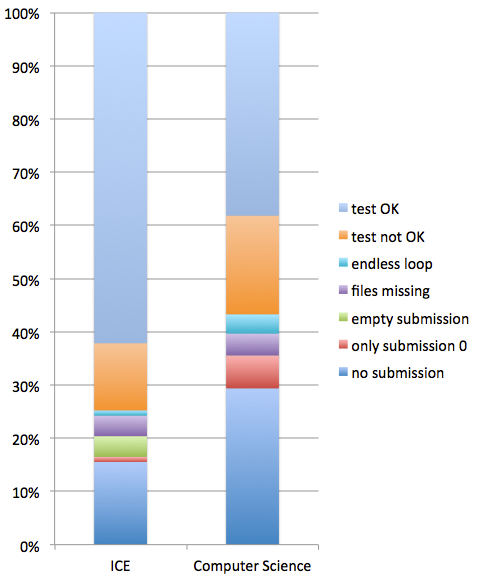Above you can see the distribution of the exam grades of last week’s final exam in “Rechnerorganisation”.
It hurts to see such a high failure rate. However, this pain is covered by the pleasure to see also many splendid grades.
Those of you who follow this blog know that I am trying hard to convince you all that it pays off to work hard. Those of you who attend class might even get the opinion that it is fun to dive into the topic of the class.
Those of you who have attended the “repetitorials” in the last 2 to 3 weeks might even agree with me that I really tried hard to prepare you for the exam. And hopefully your attendance in class helped to work your way to achieve not only a good grade, but also get a good understanding of what is going on inside a computer and how to design digital systems.
In case you liked the course, but still got a bad grade: Maybe it was a lack of skills with time management; maybe you underestimated my pedantic way of looking at your answers in the exam; maybe you just had a bad day. In any case, try to learn from your experience: If you fall, for whatever reason, you just need to stand up again and continue with more experience.
If you got an average grade: Make yourself a promise that you can do better next time in some other exam.
If you got an excellent grade: Nourish your self esteem. And be mentally prepared for days when it does not go so well. The next exam will definitely also be tough.
OK. Let’s have a look at the detailed outcome depending on the immatriculation number.
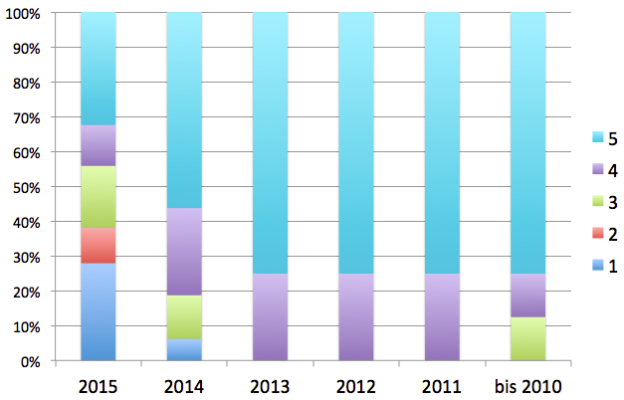
We had 4 groups: group A, group B, group C, group D, and group E. The links will lead you to the exam questions. Below you can see the outcome depending on the group.
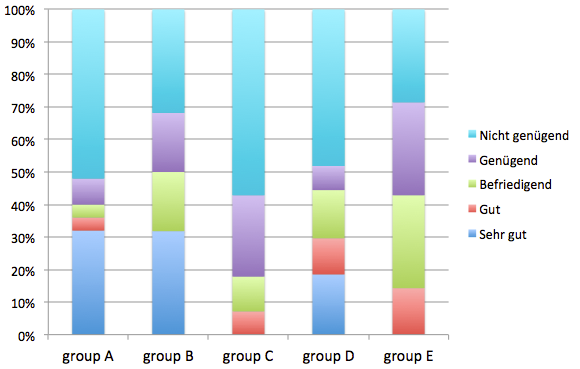
I got also interested in the following question: What if all students would get 25 points on the question on finite state machines. Many of you know that each exam in Rechnerorganisation has 1 question on finite state machines or algorithmic state machines (ASM). The question asks for working either from an ASM diagram towards a structural diagram at register-transfer layer, or the other way round. It could also be a question to derive a timing diagram from either an ASM diagram or a diagram at register-transfer layer; or the other way round. Once you have mastered this not too difficult material, you get 25 points out of 100 points in the exam “for free”.
The graph below shows the hypothetical outcome of the exam if all students taking the exam would have been able to solve the free-of-charge question:
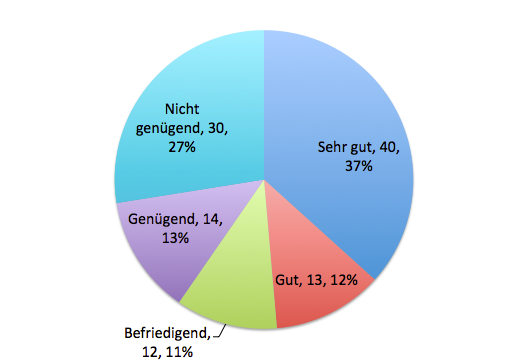
I would like to look at a second hypothetical situation: What if all students would have been able to get 25 points on those questions which I explicitly explained on the blackboard in class in the two last weeks before the exam. In this case, the failing rate would have dropped to 12% only.
Why do students not listen to me when I explicitly tell them about the important facts with regard to exams? (1) Learn to solve simple problems with regard to finite state machines and algorithmic state machines. (2) Attend the important classes where I show you the solutions to exam questions.
Why do students rather memorize wrong answers which they find in some database on the web? I have seen all to many wrong answers of this type.
I was also interested in the relation between bachelor students of computer science (CS) and bachelor students of information and computer engineering (ICE). For those two groups, Rechnerorganisation is a compulsory course. Below is a comparison with regard to grades:
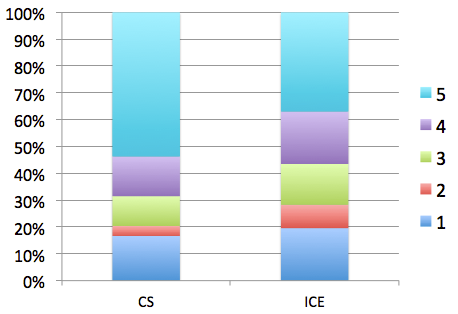
Apparently, the ICE students perform better. I am still trying to figure out the reason for this difference. In a similar chart — see below — I have compared the results of the first-year students only:
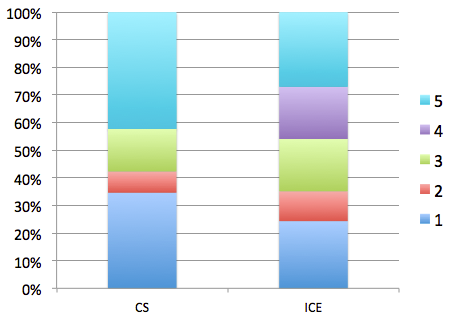
Here, the CS students at the “good” end perform better compared to their ICE colleagues.
So much for statistics.
In case you would want to check out the exact points you got on each problem, come to my office. But, please, only after August 11th. Until then I will be out of office.
Before I wish you relaxing summer holidays, let me remind you of the opportunity to evaluate the course: both, lecture and practical, are still open for a couple of days to get evaluated.
I really like to learn about your opinion. Please, go ahead an evaluate. Thank you.
I wish you a pleasant summer time.
Karl C Posch
